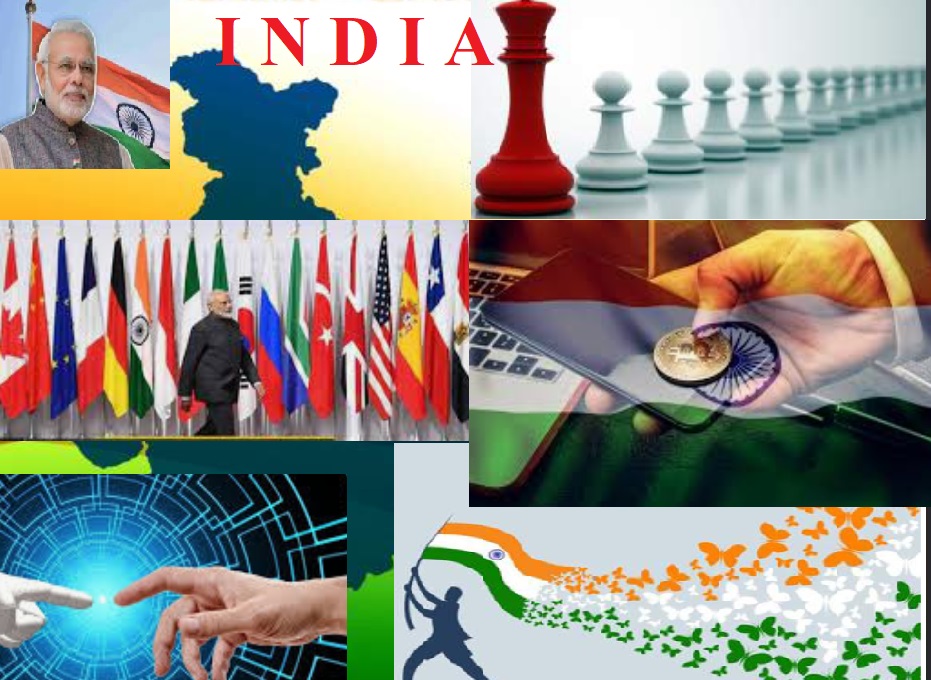
India as world’s fastest-growing economy in the post-pandemic world, is just one epitome of its capability during the global debility
The traditional Indian rural wisdom has always preached the dictum of more hands and more income. It was largely true till the decade of the 90s as India’s economy was, even more, labor intensive and wages ran most Indian households. It meant more working hands, the merrier for a family.
But times changed and liberalized economy brought with itself new technology. While this change had many positive effects, it also meant a delicate balance between employment and population in the country. The policymakers focused on population control as a necessary remedy. A balanced use of resources is not an unachievable goal in India despite all its socio-economic contradictions.
The world population has exceeded 8 billion. The latest World Probability Prospects (WPP) report predicts India will surpass China as the world’s most populous city by 2023. Market analysts believe the current decade to be India’s. The elephant is expected to wallop fastest among major international economies for at least the next 10 years.
This speed can swifter if our economy grows in tandem with our population. The same UN report acknowledges India’s achievement of pulling out as many as 41.5 crore people from below the poverty line in the past 14 years.
India’s challenges, however, are no less tall than its feats. The country is still home to nearly 22.89 crores poor, more than anywhere in the world. Nigeria is a distant second in this inconspicuous list with an estimated 9.67 crore people still living in poverty.
It is encouraging that India’s population growth rate has gone below one per cent, but so has the global rate for the first time after 1950. In contrast, India’s fertility has gone down from 5.2 per cent to 2.1 per cent in the same period.
The world is trying to understand investors’ unwavering interest in India’s success story. Its resilience in bouncing back from the post-demonetization growth rate of below four per cent at one time to quickly regaining its position as the world’s fastest-growing major economy in the post-pandemic world.
Meanwhile, the neighboring dragon seems to be in a sort of quagmire. President Xi Jinping’s regime was battling raging Covid-19 numbers at the time of the publication of this article. The Chinese economy has still not normalized. A strict zero-Covid policy is increasingly proving to be untenable. It has not only led investors to look for other better options but also pushed China’s 19 per cent senior citizen population out of the economy. The youth is no less afflicted with retrenchments on the rise.
The country has lost approximately 700 core dollars worth of investment in the first half of the year 2022. Many of its tech tycoons are fighting for survival. The Ukraine crisis hasn’t helped matters. China’s mighty real estate sector has crashed by 20 per cent in just one year. Lakhs of youngsters aged 16 to 24 have been rendered jobless as a result. And yet, President Xi Jinping’s response is no match to India’s crafty efforts to navigate geo-economic high winds.
India was indeed among the worst sufferers of the pandemic. That didn’t stop the country from becoming the world’s office in the Covid-19 era. Work from India became no less popular among multi-national corporate as work-from-home was in the working class. India’s technologically trained workforce kept the wheels running for many global companies as the global economy was battered by the coronavirus. As the world grappled with rising unemployment, the total number of outsourced jobs went up from 43 lakhs to 51 lakhs in India. Analysts expect this number to cross 1 crore by the end of the current decade. Investment management company Morgan Stanley estimates global corporate expenditure on outsourcing to reach 50,000 crore dollars by 2030 from the current 18,000 crore dollars.
The successful envisioning of Digital India has raised hope that the Indian economy would soon transform itself into a post-paid economy from a pre-paid one. India is not only consuming more energy, but it is also finding new sources for it. Many would consider it a watershed moment in India’s growth saga.
The Indian market has lately benefited from sluggish US and western economies. The Indian equity market’s contribution to global market capitalization has for the first time breached the 4 per cent mark. This percentage was just 2.3 a year ago. It cannot be the sole benchmark for any economy’s health check but, no mean achievement still, especially when you consider the global market capitalization fall from 54 lakh crore to 40 lakh crore since November 2021. Uncle Sam rules the roost in this arena with a 44 per cent contribution. China has a robust 10.2 per cent share while Japan stands at 5.4 per cent and Hong Kong at 5 per cent. India will be the world’s third-largest share market by 2032 if Morgan Stanley’s forecast is to be believed.
Indian rupee value against the US dollar has touched raw political nerves in recent times. It has also shown signs of stabilizing after a bumpy ride in October- November. It has recently strengthened by 2.2 per cent against the US dollar. We saw it gain by as many as 100 paise in a day. The Reserve Bank of India’s (RBI) report points towards improving liquidity in the market. It continues to be in surplus. Commercial banks are lending more as their customers are looking to borrow not only for agriculture and setting up businesses but also for services and personal reasons. The net non-performing assets (NPA) have reduced to one per cent of total bank assets.
Inflation was at a three-month low of 6.77 per cent in October. India’s per capita income is expected to reach USD 5,242 per annum by 2031. It currently stands at USD 2,278. Demand is also renewing in the agriculture and industrial sectors.
Morgan Stanley agrees with the projection of India remaining the fastest-growing major economy for the next 10 years. India’s growth rate could amount to nearly 20 per cent of the total global economic growth rate by that time. The country’s economy is estimated to grow by 40,000 crore dollars every year. It is likely to cross a 7.5 trillion dollar value by 2031.
If there’s a lesson to be learnt from all these future projections then it is to plan for our future growth needs. We not only need to keep the population in control but also ensure social security for an ageing population. It might be trickier than it sounds. Citizens over the age of 65 constitute 10 per cent of the global population in 2022. The number is likely to rise to 16 per cent by 2050. India will have more than 30 crore citizens above the age of 60 to care for by that time.
India can do even better if it manages its population better. We will need to find ways to maximize the utilization of our workforce skills and redefine societal relations between the young and the old. India is in a more advantageous situation in this respect as compared to China. Our youth is the real architect of our future. The future of the Indian economy rests on them.


















